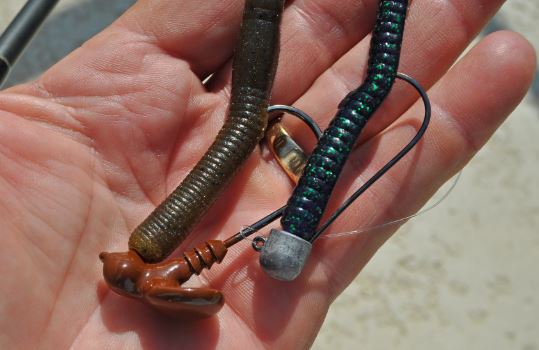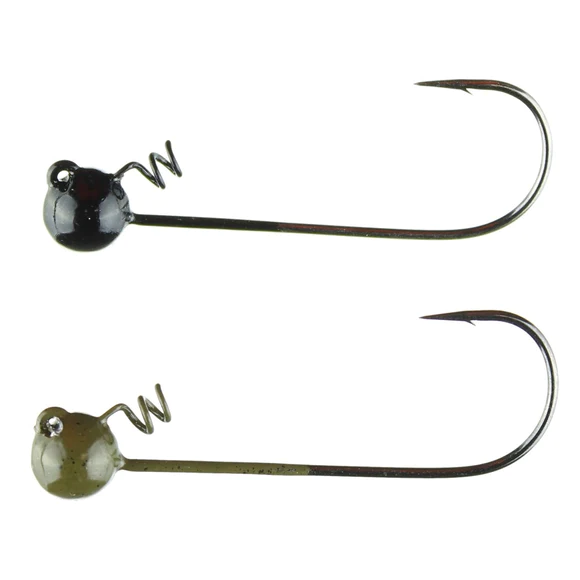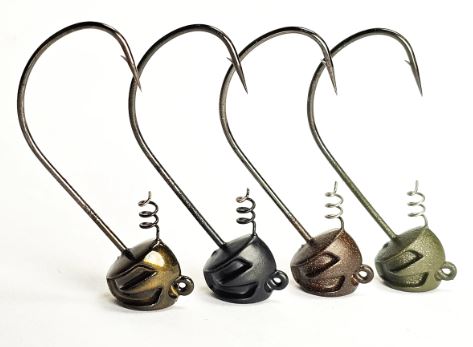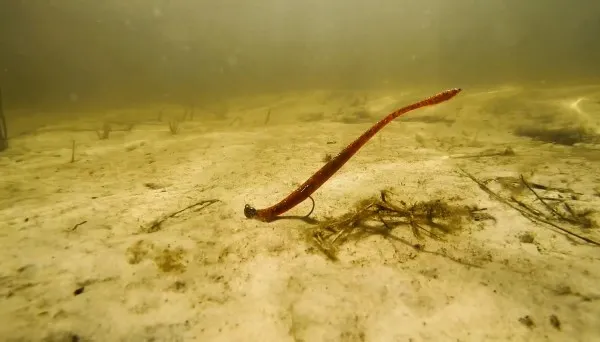Table of Contents
Toggle
The shaky head, a simple yet highly effective finesse bass fishing technique, has become a go-to for anglers when other setups fail to produce results.
This technique involves pairing a jig head hook with a finesse soft plastic, typically a straight tail worm.
Known for its reliability, the shaky head, alongside the ned rig, has proven to outperform other rigs, consistently enticing and catching more bass.

The shaky head is a very simple finesse bass fishing technique. It consists of a jig head hook paired with a finesse soft plastic, usually a straight tail worm.
Shaky heads are one of those baits that you tie on when nothing else is working.
The shaky head and the ned rig are the most reliable rigs and catch more bass than any other setups.
For some reason, there are endless jig head designs out there. Most of these are made to catch fisherman more than they are bass.
There are only two styles that you actually need. When it comes to weight, a 1/8 oz, 3/16 oz, and 1/4 oz are the best options.

The ball or round jig heads are better for fishing the shaky head worm a bit faster and more aggressive.
Throughout the warmer months, I mostly fish the round jig heads so that I can drag and hop the bait smoothly on the bottom.
There are both bait keeper and screw lock options, and choosing those is up to you.
I prefer the screw lock hooks because they are easier to rig up completely straight.

These jig heads are best for fishing the shaky head worm very slowly and with longer pauses.
The flat side of the weight will keep the worm angled up and dangling and waving at the fish.
A flat-sided shaky head is one of my go-to winter and pre-spawn setups to fish slowly and persuade bass to bite.
Again, there are both screw lock and bait lock styles, I always choose the screw lock hooks.

Although it is called the “shaky head”, you don’t have to shake the bait to catch bass.
In fact, I don’t usually shake the bait, unless I am focusing on a specific piece of structure.
The most popular retrieve is just a slow drag with occasional hops and jerks.
Just like the ned rig, the shaky head is a super finesse presentation, so you don’t need the bait to have tons of action to get bites.
Let the simplicity and fluidity of the worm to do all the work for you.
In the winter months, I will do more shaking to keep the bait in one spot longer.
I’ll use a flat-bottom jig head and shake the worm very slowly and subtly to get finicky, cold water bass to bite.
But for the most part, I just drag and hop the shaky head on the bottom much like you do a football jig or Carolina rig.
You can really fish shaky head jigs anywhere. Shallow water, deep water, open water, grass, or anywhere else.
I don’t like to fish it in water deeper than 20 feet, because then you have to use heavier jigs and you lose the essence of finesse.
Since the main retrieve is a sweeping drag motion, you can actually cover a decent amount of water with a shaky head and fish it in open water.
But of course, casting to tree laydowns, docks, points, or other cover and fishing it slower is fantastic.
Cast really close to the cover and let it sink and glide down to the bottom. Then shake it and pull it through or over the cover.
During the dog days of summer when it gets really hot, I always use this method.
Bass will be holding very closely to cover to get out of the sun, and won’t want to eat very much.
I might not have answered, “where to fish a shaky head?” very clearly. But you can really fish it anywhere and everywhere.
This is also not so easy to answer because again, the answer is all year round.
But the shaky head really shines when bass fishing gets tuff and not other lures are working.
So the winter months and the hot summer bass fishing days are when I turn to the shaky head the most.
As with all finesse baits, shaky head fishing will work best in clear to stained water.
Once the water gets real muddy, it is gonna be hard for bass to find it.
It is also quite difficult to fish a shaky head in windy conditions.
The wind will blow your bait and line all over the place, and lessen its effect.

For the most part, straight-tail, finesse worms are the best soft plastic baits to use for shaky head fishing.
So most of these baits will be finesse worms, but I’ll throw in a different option for those of you who want a bit more action.
Other baits can work, but aren’t what the shaky head is made for.
The Zoom Trick Worm has caught me more bass than anything else.
Since I was a young kid, I fished a green pumpkin or black trick worm tons of different ways, and it always produced great results.
There is just something about this bait that gives me tons of confidence when I am using it, and it is my favorite bait to use on shaky heads.
The Z-man worm has the exact same profile as the trick worm, but it floats.
This is great in the cold months when you are fishing slowly.
The plastic worm will point up and sway in the current. Bass just can’t resist it.
All soft plastic companies make a lizard bait, but I have been fishing with the Zoom lizard since a child, so it is my favorite for shaky head fishing.
The great thing about lizards is that even though they have lots of appendages, they are all very thing, so it maintains a subtle and finesse presentation.
I prefer a spinning rod setup with 8-12 lb fluorocarbon line. The light line gives you more sensitivity and dones’t spook finicky bass.
Some anglers use baitcaster rods, and I can if I really need to, but I just prefer the spinning gear for extra casting distance and simplicity.
If I am using a baitcaster, it will be with a 1/4 oz or heavier jig head. Anything lighter than that and you won’t be able to cast effectively.
Whether you choose a round jig head for a faster, aggressive approach or a flat-bottom jig head for a slower, more finesse presentation, the shaky head’s effectiveness remains unmatched.
Remember, it’s not just a bait; it’s a strategy employed when other lures fall short.
So, the next time you find yourself in challenging fishing conditions, consider tying on a shaky head worm and letting its finesse and subtlety do the work for you.
The shaky head technique catches big fish and lots of fish, making it an all time great rig.
